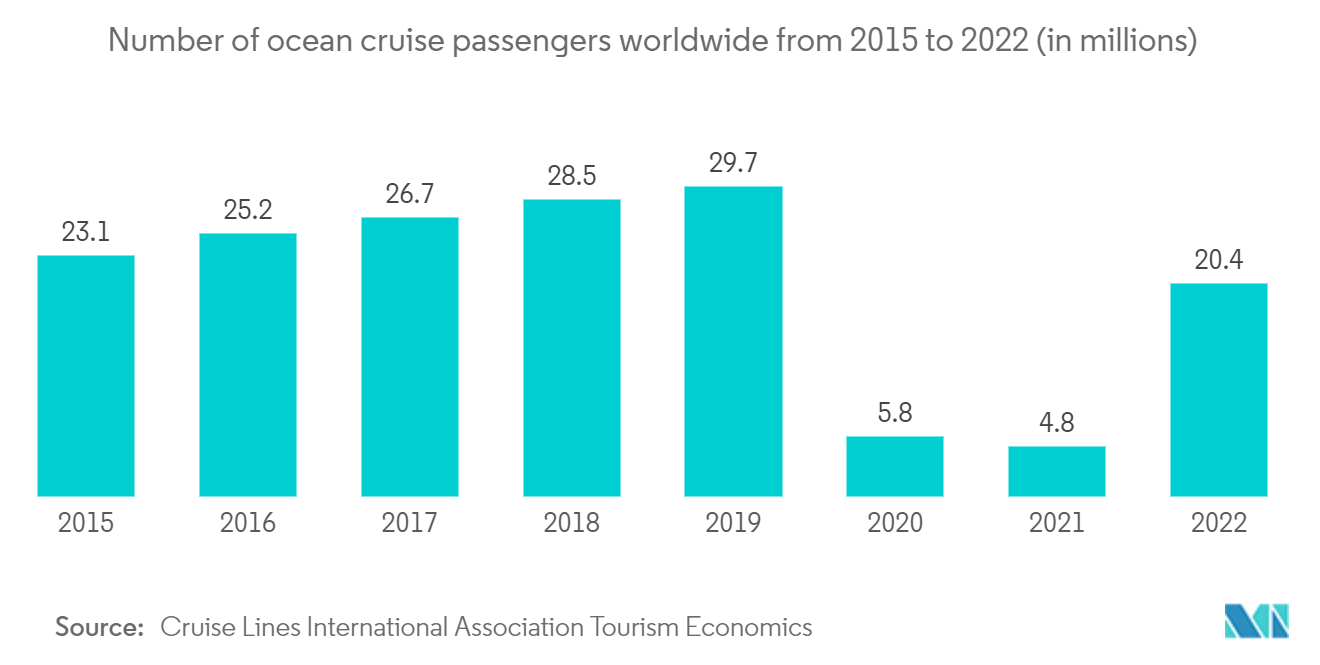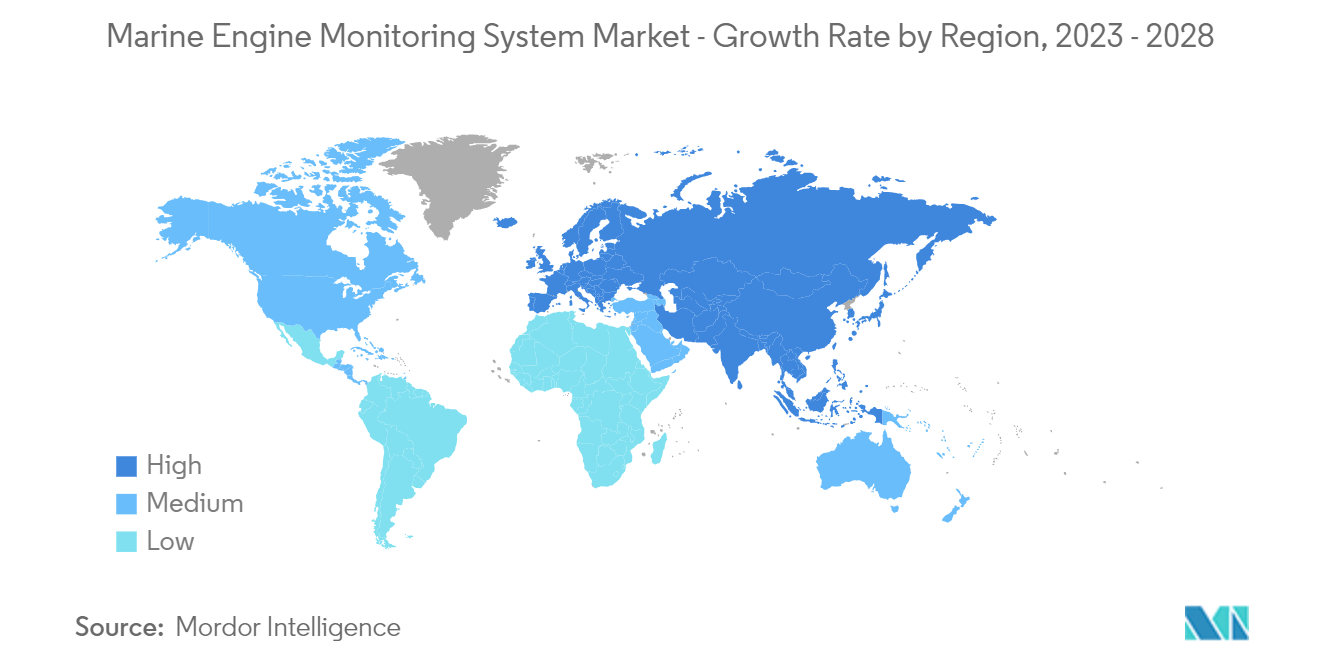Market Trends of Marine Engine Monitoring System Industry
Passenger Type Witnessing Major Growth
Reduction of carbon emission is the focal point for most of the shipbuilders in the current scenario as major shipbuilders are investing in cleaner technologies to achieve the goal of zero emissions from operations. For instance,
MSC World Europa, an LNG-powered cruise ship features advanced environmentally-friendly technologies, such as an LNG-powered fuel cell, with a 50-kilowatt demonstrator system that incorporates solid oxide fuel cell (SOFC) technology, as SOFC solution can reduce greenhouse emissions by about 30%. The LNG Cruise ship will be built in France and is set to enter service in 2022.
The Chinese authorities have made emission requirements even stricter than the International Maritime Organization (IMO) regulations. The China GB15097 regulation, which is commonly known as C1 and C2, includes limits for particulate matter (PM). Thus, key players are launching new engines that meet these stringent emission norms, which are further driving the market in the region.
- In September 2022, Wartsila Corporation announced orders for its newly launched Wartsila 20 engines in China. These engines are equipped with Wartsila NOR NOX emissions reducer to comply with China’s stage II, popularly known as C2, emissions standards.
Shipping continues to be the most cost-effective method of transferring products from supplier to customer, with 75% of commodities entering Europe by sea from foreign partners. As a result, there has been an increase in demand for marine transport throughout the years, resulting in a growth in the quantity of imports and exports worldwide.
With globalization establishing roots in the core of many economies, there are increasing opportunities for international trade goods to provide a superior selection of accessible items at various price points.
In terms of commercial value, the ranking of fleet ownership and registration is more volatile than in terms of tonnage. China increased its share the most, by 1.1 percentage points, followed by Switzerland, Hong Kong China, and the Republic of Korea, all of which have a higher proportion of container ships in their fleets.
The above-menitoned develpment across the globe is likely to witness major growth for the market during the forecast period.

North America is the Largest Market
Over the recent years, this region has depicted rapid economic development as well as the growth of the manufacturing and energy sectors, thereby accelerating maritime trade, these activities are expected to increase in the forecast period.
The rise in seaborne trade has subsequently contributed to a rise in the demand for ships used to transport manufactured goods globally. The region consists of fastest growing economies in the world like China and India. The rapid pace of growth is supported by increasing industrialization and construction activities in the region. This will require an increase in demand for marine vessels for raw materials and finished goods imports and exports from the region. This will drive the growth in the market.
The local government is introducing contracts for ships for the navy, which may generate the demand for defense ships in the country. To support the government’s plans to build a large vessel fleet, the government signed a long-term strategic agreement with two Canadian shipyards, namely, Irving Shipbuilding Inc. (Halifax) and Seaspan’s Vancouver Shipyards Co. Ltd (Vancouver), for the construction of combat and non-combat naval vessels for the Royal Canadian Navy and non-combat vessels for the Canadian Coast Guard.
- In this regard, in January 2023, Irving Shipbuilding and the federal government agreed to a USD 1.6 billion contract to build two additional Arctic and offshore patrol ships for the Canadian Coast Guard.
To rebuild Canada's federal fleet of combat and non-combat ships, with established partnerships with two Canadian shipyards, Irving Shipbuilding Inc. and Seaspan Vancouver Shipyards. Opportunities exist for Canadian shipyards and enterprises across the nation to build, repair, refit, and maintain small ships under the second and third pillars of the National Shipbuilding Strategy (NSS).
- In June 2022, The Government of Canada began negotiations with ChantierDavie of Lévis, Quebec, towards an umbrella agreement to become the NSS's third strategic shipbuilding partner.
Moreover, the commercial shipping industry in the country is growing at a steady pace, as major shipyards are winning contracts from different authorities and companies. In addition to the presence of domestic shipbuilding companies, foreign shipbuilding companies are slowly increasing their presence in the country.
The conversions of the existing fleet with the new ships are anticipated to lower the emissions from the ships and boost the growth of the marine engine monitoring system market in the country.


